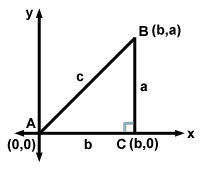Please wait while we process your payment
If you don't see it, please check your spam folder. Sometimes it can end up there.
If you don't see it, please check your spam folder. Sometimes it can end up there.
Please wait while we process your payment

By signing up you agree to our terms and privacy policy.
Don’t have an account? Subscribe now
Create Your Account
Sign up for your FREE 7-day trial
By signing up you agree to our terms and privacy policy.
Already have an account? Log in
Your Email
Choose Your Plan
Individual
Group Discount
Save over 50% with a SparkNotes PLUS Annual Plan!
 payment page
payment page
Purchasing SparkNotes PLUS for a group?
Get Annual Plans at a discount when you buy 2 or more!
Price
$24.99 $18.74 /subscription + tax
Subtotal $37.48 + tax
Save 25% on 2-49 accounts
Save 30% on 50-99 accounts
Want 100 or more? Contact us for a customized plan.
 payment page
payment page
Your Plan
Payment Details
Payment Summary
SparkNotes Plus
You'll be billed after your free trial ends.
7-Day Free Trial
Not Applicable
Renews July 12, 2025 July 5, 2025
Discounts (applied to next billing)
DUE NOW
US $0.00
SNPLUSROCKS20 | 20% Discount
This is not a valid promo code.
Discount Code (one code per order)
SparkNotes PLUS Annual Plan - Group Discount
Qty: 00
SparkNotes Plus subscription is $4.99/month or $24.99/year as selected above. The free trial period is the first 7 days of your subscription. TO CANCEL YOUR SUBSCRIPTION AND AVOID BEING CHARGED, YOU MUST CANCEL BEFORE THE END OF THE FREE TRIAL PERIOD. You may cancel your subscription on your Subscription and Billing page or contact Customer Support at custserv@bn.com. Your subscription will continue automatically once the free trial period is over. Free trial is available to new customers only.
Choose Your Plan
This site is protected by reCAPTCHA and the Google Privacy Policy and Terms of Service apply.
For the next 7 days, you'll have access to awesome PLUS stuff like AP English test prep, No Fear Shakespeare translations and audio, a note-taking tool, personalized dashboard, & much more!
You’ve successfully purchased a group discount. Your group members can use the joining link below to redeem their group membership. You'll also receive an email with the link.
Members will be prompted to log in or create an account to redeem their group membership.
Thanks for creating a SparkNotes account! Continue to start your free trial.
We're sorry, we could not create your account. SparkNotes PLUS is not available in your country. See what countries we’re in.
There was an error creating your account. Please check your payment details and try again.
Please wait while we process your payment

Your PLUS subscription has expired
Please wait while we process your payment
Please wait while we process your payment

Techniques for Solving
Consider the right triangle pictured below:

trigfuncdefined
sin(A) =  = =  |
cos(A) =  = =  |
tan(A) =  = =  |
csc(A) =  = =  |
sec(A) =  = =  |
cot(A) =  = =  |
In order to solve a right triangle, you must first figure out which angle is the right angle. Knowing the right angle will also tell you which side is the hypotenuse, since the hypotenuse will always stand opposite the right angle. In this text, for the sake of consistency, in all triangles we will designate angle C as the right angle, and side c and the hypotenuse. To finish solving a right triangle, you then must either know the lengths of two sides, or the length of one side and the measure of one acute angle. Given either of these two situations, a triangle can be solved. Any further information about a triangle may be helpful, but it is not necessary.
There are four basic techniques to use in solving triangles.
The last two techniques are the most difficult to understand. Some examples will help clear them up.
Using technique #3, given a = 4 and B = 22o, c = a sec(B) =  . In this example, we will use trigonometric function
definitions to calculate an unknown part, side c. A calculator (or a very good
memory) is necessary to evaluate certain function values, like sec(B) and
cos(B) in this example. In this way trigonometric functions can be used to
calculate unknown parts of triangles.
. In this example, we will use trigonometric function
definitions to calculate an unknown part, side c. A calculator (or a very good
memory) is necessary to evaluate certain function values, like sec(B) and
cos(B) in this example. In this way trigonometric functions can be used to
calculate unknown parts of triangles.
Using technique #4, given a = 3 and b = 4,  = arctan(A) = arccot(B). Here the inverse functions Arctangent and Arccotangent are used to
calculate the measures of either unknown acute angle in a particular triangle.
Again, a calculator is necessary to do the final calculation. There are
numerous ways to relate any two parts of a triangle in a trigonometric equation
to find a third unknown part.
= arctan(A) = arccot(B). Here the inverse functions Arctangent and Arccotangent are used to
calculate the measures of either unknown acute angle in a particular triangle.
Again, a calculator is necessary to do the final calculation. There are
numerous ways to relate any two parts of a triangle in a trigonometric equation
to find a third unknown part.
Please wait while we process your payment

